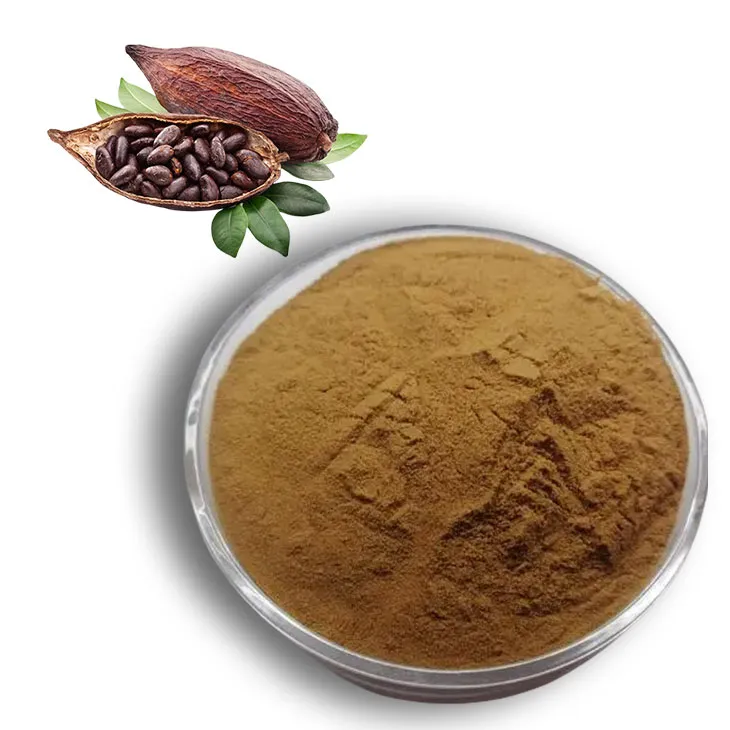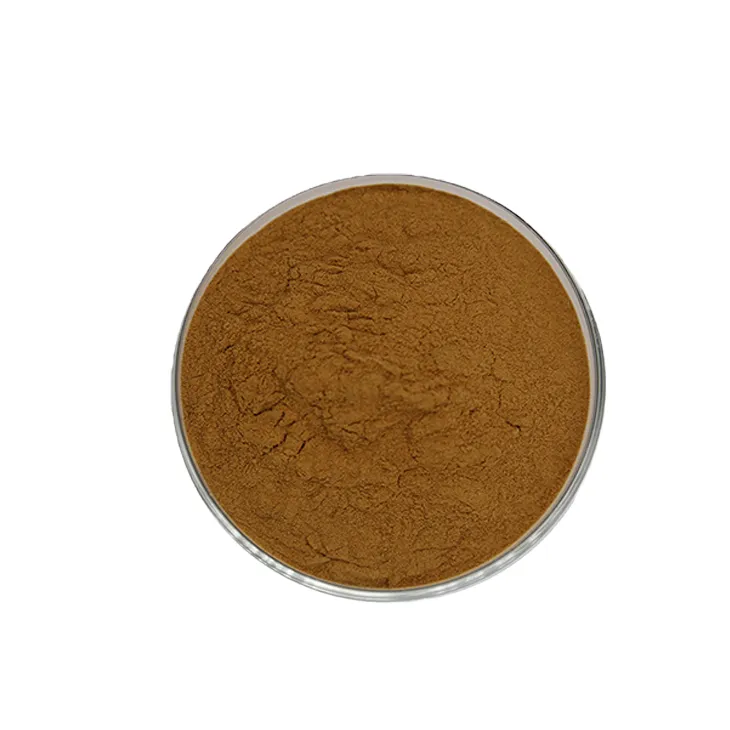- 0086-571-85302990
- sales@greenskybio.com
Cocoa Extract: From Leaves to Extraction
2024-11-11

1. Introduction
Cocoa has long been a beloved ingredient in the world of food and beverages, known for its distinct and rich flavor. However, the journey from cocoa leaves to Cocoa Extract is a complex and multi - faceted process. This article aims to delve into the various aspects of this process, including the role of leaf quality, extraction technologies, and the cultural and economic impacts of Cocoa Extract production.

2. The Importance of Cocoa Leaves
Cocoa leaves play a crucial role in the production of Cocoa Extract. They are the starting point of a long and intricate process. The quality of the cocoa leaves can have a significant impact on the final product.
2.1 Factors Affecting Leaf Quality
- Genetic Varieties: Different genetic varieties of cocoa plants produce leaves with varying chemical compositions. For example, Criollo cocoa leaves may have different characteristics compared to Forastero leaves. These genetic differences can influence the flavor profile and the efficiency of the extraction process.
- Growing Conditions: The environment in which the cocoa plants are grown also affects leaf quality. Factors such as soil type, climate, and altitude play important roles. Cocoa plants grown in rich, well - drained soil and in a tropical climate with consistent rainfall are likely to produce higher - quality leaves. For instance, cocoa grown in regions like Ivory Coast and Ghana often benefits from favorable growing conditions.
- Pest and Disease Management: Pests and diseases can damage cocoa leaves, reducing their quality. Infestations by pests such as the cocoa pod borer or diseases like black pod disease can lead to changes in the leaf's chemical makeup. Effective pest and disease management strategies, such as the use of biological control agents or proper fungicide applications, are essential to maintain leaf quality.

3. Extraction Technologies
There are several extraction technologies used to obtain cocoa extract from the leaves. Each technology has its own set of advantages and disadvantages.
3.1 Solvent - Based Extraction
Solvent - based extraction is one of the most common methods. In this process:
- Selection of Solvents: Organic solvents such as ethanol or hexane are often used. Ethanol is a popular choice as it is relatively safe and can effectively dissolve the desired compounds from the cocoa leaves. However, hexane has a higher solubility for certain lipid - soluble components.
- Extraction Procedure: The cocoa leaves are first dried and ground into a fine powder. This powder is then mixed with the selected solvent. The mixture is stirred or agitated for a period of time, usually several hours to days, depending on the scale of extraction and the nature of the compounds being targeted.
- Separation and Purification: After the extraction, the solvent - containing the dissolved cocoa compounds is separated from the solid residue. This can be done through filtration or centrifugation. The solvent is then evaporated to obtain the cocoa extract. However, this process requires careful control to ensure that no harmful solvent residues remain in the final product.
3.2 Supercritical Fluid Extraction
Supercritical fluid extraction is a more advanced and environmentally friendly method.
- The Concept of Supercritical Fluids: Supercritical fluids possess properties between those of a liquid and a gas. For cocoa extract production, carbon dioxide is often used as a supercritical fluid. At certain pressure and temperature conditions (above its critical point), carbon dioxide can penetrate the cocoa leaves and selectively extract the desired compounds.
- Extraction Process: The cocoa leaves are placed in an extraction chamber. Supercritical carbon dioxide is pumped into the chamber. The fluid flows through the leaves, dissolving the target compounds. The mixture of supercritical carbon dioxide and the dissolved compounds then moves to a separation chamber where the pressure is reduced. As the pressure decreases, the carbon dioxide returns to its gaseous state, leaving behind the pure cocoa extract.
- Advantages over Solvent - Based Extraction: Supercritical fluid extraction has several advantages. It is a cleaner process as it does not leave behind harmful solvent residues. It also offers better selectivity, allowing for the extraction of specific compounds with greater precision. Additionally, it can operate at relatively low temperatures, which helps to preserve the heat - sensitive compounds in the cocoa leaves.

4. The Scientific Mechanisms Behind Extraction
Understanding the scientific mechanisms behind cocoa leaf extraction is essential for optimizing the process and ensuring the quality of the extract.
4.1 Chemical Compounds in Cocoa Leaves
Cocoa leaves contain a variety of chemical compounds, including alkaloids, flavonoids, and phenolic acids. Alkaloids such as theobromine and caffeine are important for the characteristic flavor of cocoa. Flavonoids like epicatechin and catechin have antioxidant properties. These compounds interact differently with the extraction solvents or supercritical fluids.
4.2 Interaction with Solvents and Supercritical Fluids
When using solvent - based extraction, the solubility of these compounds in the solvent is a key factor. For example, polar solvents like ethanol are more effective in dissolving polar compounds such as flavonoids, while non - polar solvents may be better for lipid - soluble components. In supercritical fluid extraction, the density and diffusivity of the supercritical fluid play important roles. The supercritical carbon dioxide can adjust its properties by changing the pressure and temperature, allowing it to selectively extract different compounds based on their chemical nature.

5. Cultural and Economic Impacts of Cocoa Extract Production
Cocoa extract production has far - reaching cultural and economic impacts.
5.1 Cultural Significance
Cocoa has deep - rooted cultural significance in many regions around the world. In some cultures, cocoa is used in traditional ceremonies and celebrations. For example, in certain indigenous cultures in Central and South America, cocoa is an integral part of religious and social rituals. The production of cocoa extract helps to preserve and promote these cultural traditions by making cocoa products more accessible and diverse.
5.2 Economic Impact
- Employment: The cocoa industry, including cocoa extract production, is a major source of employment in many developing countries. From farmers who grow the cocoa plants to workers in the extraction and processing facilities, a large number of people depend on the cocoa industry for their livelihoods.
- Income Generation: Cocoa extract production contributes to the overall income of countries that are major cocoa producers. The export of cocoa extract and related products brings in foreign exchange, which can be used for economic development projects.
- Industry Growth: The development of the cocoa extract industry also stimulates the growth of related industries, such as the food and beverage industry, cosmetics, and pharmaceuticals. As the demand for cocoa - based products increases, these industries expand, creating more economic opportunities.
6. Conclusion
The process of transforming cocoa leaves into cocoa extract is a complex and important one. The quality of the leaves, the choice of extraction technology, and the associated cultural and economic impacts all play significant roles. As the demand for cocoa - based products continues to grow, further research and development in cocoa leaf extraction will be crucial to ensure the sustainable production of high - quality cocoa extract.
FAQ:
Question 1: How does the quality of cocoa leaves influence the extraction process?
The quality of cocoa leaves can significantly impact the extraction process. High - quality leaves typically have a higher concentration of the desired compounds. For example, if the leaves are fresh and properly grown, they are more likely to contain a greater amount of the flavor - rich and beneficial substances. Leaves that are damaged or diseased may have a reduced amount of these compounds. Also, the maturity of the leaves matters. Mature leaves often have different chemical compositions compared to young leaves, which can affect the extraction yield and the quality of the final cocoa extract.
Question 2: What are the main differences between solvent - based and supercritical fluid extraction in cocoa extract production?
Solvent - based extraction uses solvents like ethanol or hexane to dissolve the desired components from the cocoa leaves. It is a relatively common and cost - effective method. However, it may leave some solvent residues in the final product, which can be a concern. Supercritical fluid extraction, on the other hand, uses a supercritical fluid (usually carbon dioxide). This method offers several advantages. It is more selective, can operate at lower temperatures (which helps preserve the delicate compounds in cocoa), and leaves no toxic residues. Supercritical fluid extraction also generally provides a purer extract with a more accurate profile of the original compounds in the cocoa leaves.
Question 3: What are the cultural impacts of cocoa extract production?
Cocoa has a long - standing cultural significance in many regions. Cocoa extract production often preserves and promotes traditional knowledge related to cocoa cultivation and processing. In some cultures, cocoa is used in religious or ceremonial practices. The production of cocoa extract can also contribute to cultural identity by maintaining local traditions of cocoa - based products such as chocolates or traditional beverages. Additionally, it can inspire cultural exchange as cocoa - related products are shared and enjoyed around the world.
Question 4: How does cocoa extract production impact the economy?
Cocoa extract production has a substantial economic impact. Firstly, it creates employment opportunities in both the cultivation of cocoa plants and the extraction process. This includes jobs in farming, harvesting, processing plants, and quality control. Secondly, the sale of cocoa extract and products made from it generates revenue. The cocoa industry is a significant part of the economy in many cocoa - producing countries, contributing to export earnings. Moreover, the growth of the cocoa extract market can stimulate related industries such as packaging, transportation, and marketing.
Question 5: What are the health benefits associated with cocoa extract?
Cocoa extract is rich in various beneficial compounds. It contains flavonoids, which have antioxidant properties. These antioxidants can help protect cells from damage caused by free radicals, potentially reducing the risk of certain diseases. Cocoa extract may also have cardiovascular benefits, such as improving blood flow and reducing blood pressure. Additionally, it may have mood - enhancing effects due to compounds like theobromine, which can act as a mild stimulant.
Related literature
- Cocoa Leaf Chemistry and Its Role in Extraction"
- "The Impact of Extraction Technologies on Cocoa Extract Quality"
- "Cultural Significance of Cocoa in Global Contexts"
- "Economic Aspects of the Cocoa Extract Industry"
- "Health - Promoting Compounds in Cocoa Extract"
- ▶ Hesperidin
- ▶ Citrus Bioflavonoids
- ▶ Plant Extract
- ▶ lycopene
- ▶ Diosmin
- ▶ Grape seed extract
- ▶ Sea buckthorn Juice Powder
- ▶ Fruit Juice Powder
- ▶ Hops Extract
- ▶ Artichoke Extract
- ▶ Mushroom extract
- ▶ Astaxanthin
- ▶ Green Tea Extract
- ▶ Curcumin
- ▶ Horse Chestnut Extract
- ▶ Other Product
- ▶ Boswellia Serrata Extract
- ▶ Resveratrol
- ▶ Marigold Extract
- ▶ Grape Leaf Extract
- ▶ New Product
- ▶ Aminolevulinic acid
- ▶ Cranberry Extract
- ▶ Red Yeast Rice
- ▶ Red Wine Extract
-
Acai Berry Extract
2024-11-11
-
Wheat Germ Extract
2024-11-11
-
Nettle leaf extract
2024-11-11
-
Berberis aristata Extract
2024-11-11
-
Garcinia Cambogia Extract
2024-11-11
-
Sophora Japonica Flower Extract
2024-11-11
-
Lemon Juice Powder
2024-11-11
-
Curcuma Longa Extract/Turmeric extract
2024-11-11
-
Green coffee bean Extract
2024-11-11
-
Hawthorn Extract
2024-11-11





















